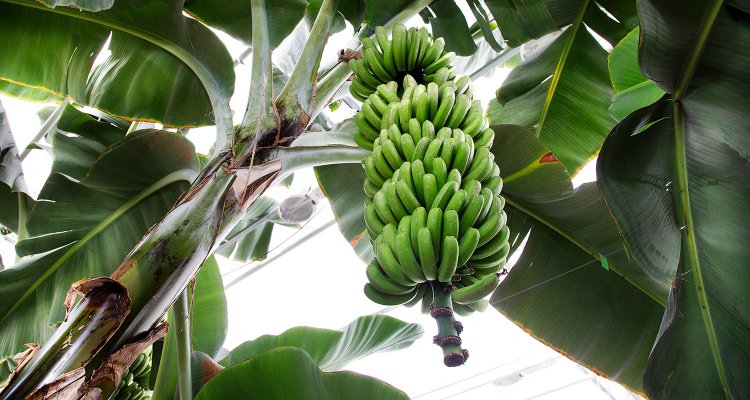Do you ever stop to appreciate the simple pleasure of biting into a ripe, yellow banana? This humble fruit may seem unassuming at first glance, but behind its cheerful exterior lies a captivating tale that spans continents and cultures. Join us on a delicious journey as we explore the global appeal of bananas, delving into their rich cultural significance and uncovering the surprising economic impact they have had on nations far and wide. From breakfast tables to artistic masterpieces, this tropical treasure has woven itself into our lives in ways we could never imagine. So grab your favourite beverage and prepare for an enlightening exploration of the world's most beloved fruit – it's time to go bananas!
Introduction: A Brief History of Bananas
The humble banana has a long and complicated history. Its origins can be traced back to SE Asia and the Indian subcontinent, where it was first domesticated over 10,000 years ago. From there, it spread to Africa and the Americas, where it was introduced by explorers and traders.
Bananas quickly became a popular food crop due to their easy cultivation and high nutritional value. They are an excellent source of vitamins C and B6, as well as potassium and dietary fibre. Today, bananas are grown in more than 130 countries around the world and are enjoyed by people of all cultures.
While they are often eaten fresh, bananas can also be cooked or processed into a variety of snacks and dishes. In many parts of the world, they are an important staple food crop providing essential nutrients for millions of people. Bananas also have significant economic importance as a major export crop for many developing countries.
Despite their ubiquitous nature, bananas remain shrouded in mystery for many people. In this article, we will take a closer look at the cultural significance and economic impact of this fascinating fruit.
Varieties and Nutritional Value of Bananas
Types of Bananas
Bananas come in many different varieties, each with its own taste, texture, and nutritional value. Here are some of the most popular types of bananas:
Cavendish Bananas: The most common type of banana sold in supermarkets, Cavendish bananas have a soft, creamy texture and a slightly sweet taste. They are an excellent source of vitamin C and dietary fibre.
Red Bananas: Red bananas have a sweeter flavour than Cavendish bananas and are often used in desserts. They are also a good source of vitamins A and C, as well as dietary fibre.
Plantains: Plantains are larger and starchier than other types of bananas. They are usually cooked before being eaten and have a savoury flavour. Plantains are a good source of vitamins A and C, as well as dietary fibre.
Global Cultural Significance of Bananas
Bananas are one of the most popular fruits in the world, enjoyed by people of all cultures and religions. They are a staple food in many tropical countries and their sweet taste and nutritional value make them a popular snack food in developed countries as well.
The global banana industry is worth billions of dollars and employs millions of people around the world. Bananas are grown in more than 100 countries and exported to every continent. The United States is the largest importer of bananas, followed by Germany and the United Kingdom.
The popularity of bananas is due, in part, to their cultural significance. In many parts of the world, bananas are seen as a symbol of good luck and fertility. They are often used in religious ceremonies and as gifts for special occasions such as births, weddings, and funerals.
Bananas also have an important economic impact. Small-scale farmers in developing countries rely on bananas for their livelihoods. In countries like Ecuador, where more than 60% of the population lives below the poverty line, bananas are a vital source of income. The export of bananas also generates foreign currency that can be used to improve a country's infrastructure and economy.
In addition to their economic importance, bananas play a significant role in social and cultural life around the world. For many people, they are a delicious treat that brings joy to everyday life.
The Effects of Climate Change on the Banana Market
Climate change is having a profound effect on the global banana market. Bananas are tropical fruits, and as such, they are very sensitive to changes in temperature and rainfall patterns. Climate change is causing bananas to ripen faster and become less Sweet. This is impacting the quality of the fruit, and as a result, the demand for bananas is decreasing. In addition, changing weather patterns are making it difficult for farmers to grow bananas. As a result of all these factors, the price of bananas has been increasing in recent years.
The impact of climate change on bananas is just one example of how this phenomenon is affecting the global economy. climate change is expected to have far-reaching effects on many industries in the coming years.
Conclusion
Bananas have had an undeniable impact on global society and economics over the centuries. From their importance in cultural rituals to their role as a major source of income for export, it is clear that bananas will remain a staple in many countries around the world. As we explore new ways to cultivate them sustainably, there is no doubt that they will continue to be both culturally significant and economically beneficial for generations to come.
